‘NaNo Without Walls’: How One YWP Teacher Created an Editing Mentorship Program for Her Students
 In addition to the main event every November, NaNoWriMo provides free creative writing resources to educators and young participants around the world through our Young Writers Program. Today, educator Julia Dweck shares the ways she’s adapted NaNoWriMo’s programs to work in her classroom:
In addition to the main event every November, NaNoWriMo provides free creative writing resources to educators and young participants around the world through our Young Writers Program. Today, educator Julia Dweck shares the ways she’s adapted NaNoWriMo’s programs to work in her classroom:Writers aren’t born, they are tended and grown, word by word, line by line, and page by page. Teachers are like gardeners who cultivate the process through shared readings, noting the elements that make stories rich experiences, conferencing, and discussing how stories develop and grow. It’s a role I take very seriously.
More than once, I’ve noted to parents that we are sowing the seeds of our future leaders and caretakers. These individuals will need to communicate through the oral and written word. Stories tap into our imagination and develop thinkers who can empathize with their listeners. That’s the power of writing!
In this, my second year rolling out the NaNoWriMo Young Writer’s Program, my goal is to make changes that will keep the act of writing engaging and fresh for my students–while also manageable for me, as their teacher. The following are some changes I’ve made to the YWP for my own classroom, which may be helpful for other educators thinking about doing NaNo in the classroom:
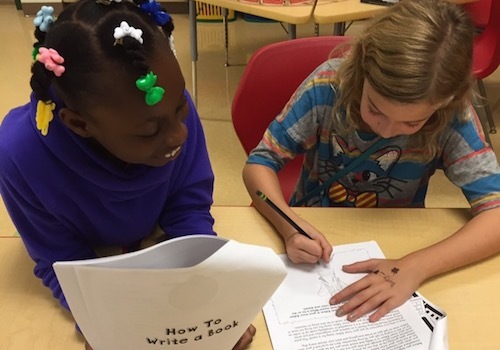 1. Expanding the NaNo Timeline
1. Expanding the NaNo TimelineAs a teacher of gifted students, I work with a unique and diverse population. Contrary to what some may believe, gifted students are not always top writers. A modicum of writing ability may be innate, but developing it requires practice over time. Therefore, expanding the NaNo timeline from a month to a school year seemed a logical choice.
This enhanced timeline allows my students to explore story elements in greater depth before beginning rough drafts. We spend September through December discussing and planning characters, setting, mood, plot outline, and dialogue.
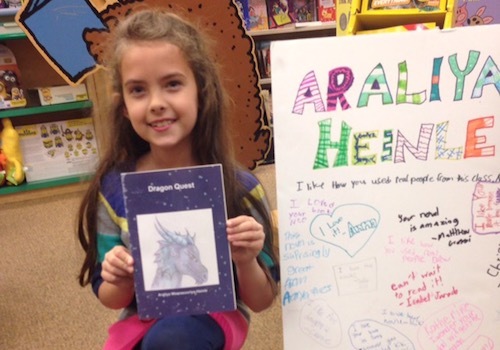 2. Virtual Conferencing
2. Virtual ConferencingAnother modification has been having my students plan, draft, and revise their novels on Google docs, shared with me. No longer does a student claim to have lost or forgotten his or her NaNo packet. Everything is shared and saved on their drives for easy access.
Virtual conferencing expands the window of opportunity to talk one-on-one with each student. As a specialist, my sessions are limited to 40 minutes twice a week. That leaves little time to meet with students individually during each writing session. Retaining students’ writing packets overnight for review impedes their continued progress. Communicating via Google Docs allows me additional time as each student’s virtual guide, extending the interaction beyond classroom hours. I am able to thoughtfully respond to each child’s writing while I am calmly sipping my weekend coffee from the comfort of my kitchen.
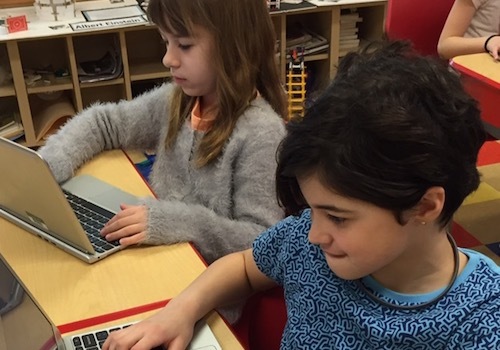 3. Writing Mentors
3. Writing MentorsI began my writing program with 60 gifted students in grades 3, 4, and 5. Each week, my students’ stories grew exponentially, requiring me to spend countless hours on reading, reviewing, and typing feedback in the form of commentary. I believe that leaving feedback is not only instructional, it is motivational and essential. Every writer needs a reader who cares. My problem was a continually growing roster and a limited number of time to read and comment all of their stories. What is a teacher to do?
The answer lies in the larger pool of writers outside the classroom. Thus grew the idea for our “NaNo Without Walls Writing Mentor Program.” Google docs opened a portal to share our stories with talented writers beyond our doors. Through cold-call emails with various directors of highly respected writing programs, I assembled an elite group of “NaNo Mentors”, an organized expert group of advanced placement high school students and outstanding writing students from undergraduate and graduate creative writing programs across the country, including Brown, Rutgers, Barnard, John Hopkins, Columbia, Penn State, and the University of Texas.
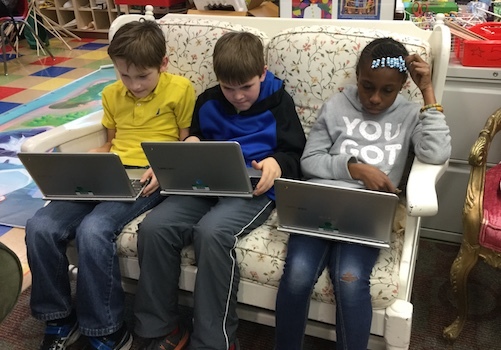
When my students embarked upon their rough drafts in mid-January, we began to pair mentors and students with similar writing interests. I considered each unique characteristic of mentor and writer in determining the best possible matches. One mentor wrote:
“As a kid, I was more into sci-fi/fantasy and now, as a poet, we could very generically say I inhabit a kind of ‘experimental’ space. So [I’m] happy to work with someone who wants to do something a little more 'out there’ (whether that means a more fantastical plot or a more 'surreal’ sort of mood/style).”
NaNo Mentors review their assigned student’s progress on a weekly basis and leave feedback. I am hoping that my students will be motivated by the presence of an expert reader who cares and shares the same enthusiasm for their stories as they do. Not only is it inspiring, it is motivational knowing that your mentor has the same passion and commitment to your story as you do.
Writing is meant to be a social experience. Our NaNo Mentors will enhance the process through active communication and dialogue. Eventually, my students will meet their mentors, either face-to-face or via Skype, solidifying the virtual writing bond they have forged over time.
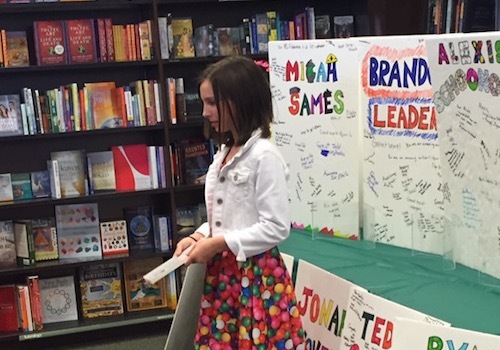
Julia Dweck is the Gifted and Talented teacher at Willow Lane Elementary School in Eastern Pennsylvania. This is her second year doing the NaNoWriMo programs with her students. Follow her students’ noveling progress on Twitter @GiftedTawk.
Chris Baty's Blog
- Chris Baty's profile
- 63 followers



